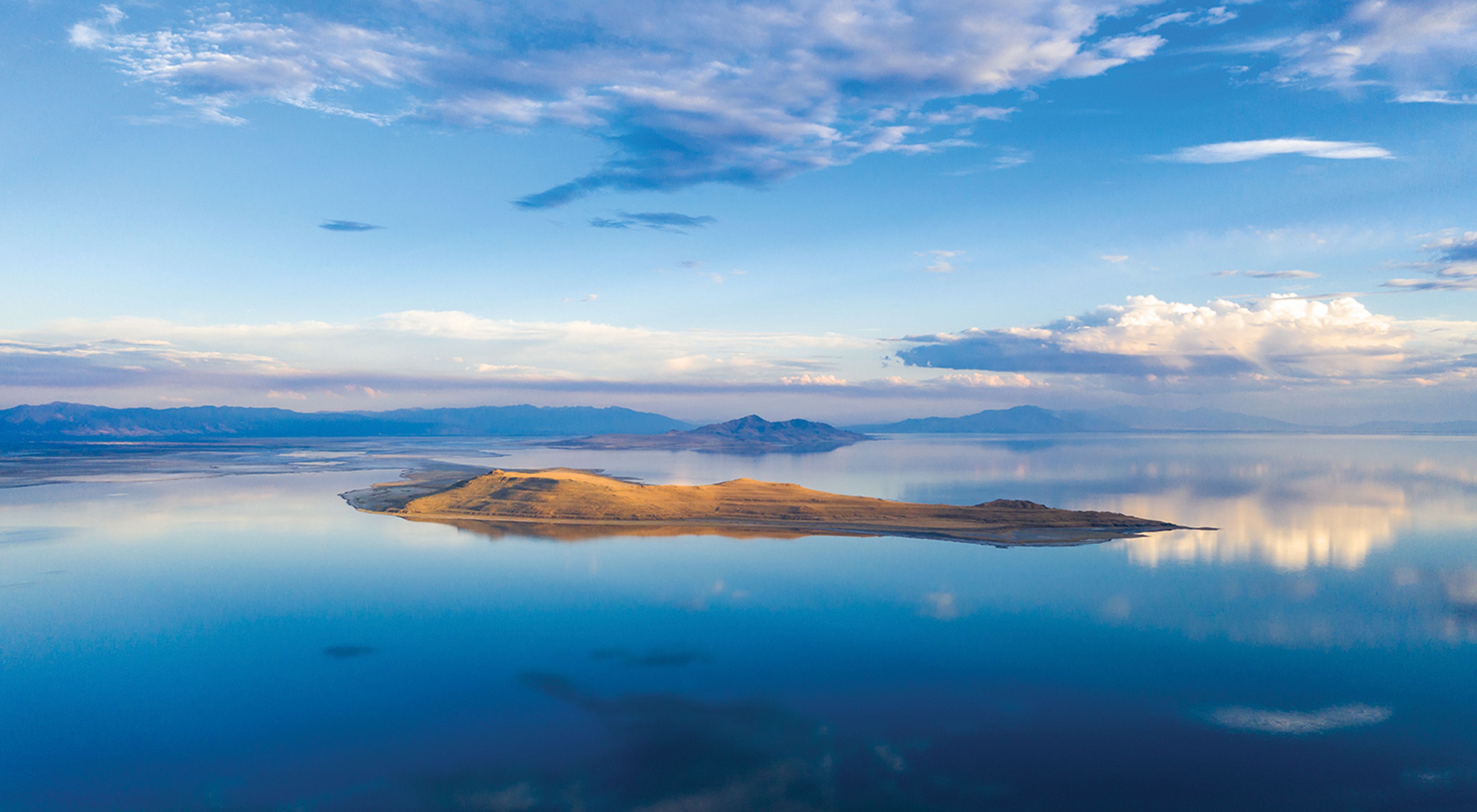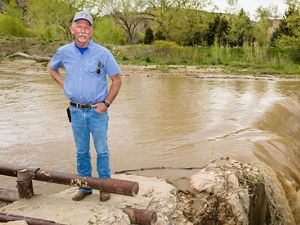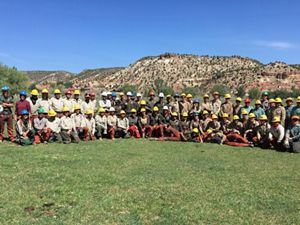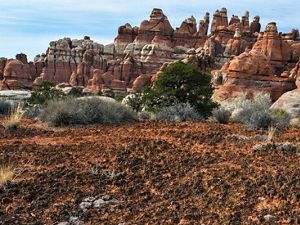Conservation Partnership Protects Fremont Island
Approximately 3,000 acres, Fremont Island has been a key unprotected land asset in the Great Salt Lake ecosystem.
Media Contacts
-
Tracey Stone
Email: tstone@tnc.org
The Nature Conservancy (TNC) and the Utah State Division of Forestry, Fire and State Lands (FFSL) are announcing today a conservation partnership which will ensure the long-term protection of Fremont Island—the third largest island in the Great Salt Lake and one of northern Utah’s most significant natural and historic landmarks.
Approximately 3,000 acres, Fremont Island has been a key unprotected land asset in the mosaic of lands and waters which comprise the Great Salt Lake ecosystem and the Great Salt Lake watershed overall. The Lake's habitats are increasingly at risk due to impacts from water diversions and climate change. Recent owners of Fremont Island were considering developing it along with other plans.
This situation changed when, on Friday, September 4, 2020, working with an anonymous conservation buyer, TNC facilitated the acquisition of Fremont Island. As negotiated by TNC and FFSL, the anonymous conservation buyer has now donated the Island to FFSL, subject to a conservation easement held by TNC. The conservation easement will protect the island’s natural values while preventing development in perpetuity. The parties would like to salute Ella Sorenson, of Great Salt Lake Audubon, for playing a key role in locating the anonymous conservation buyer.
“Fremont Island is an important part of the Great Salt Lake ecosystem and of our state’s history,” said Brian Cottam, Director Utah State Division of Forestry, Fire and State Lands. “We are delighted to partner with The Nature Conservancy to ensure the island is preserved. As the division of Utah State Government most directly involved with the management and stewardship of the Great Salt Lake’s natural resources, this is a natural fit.”

Under the terms of the conservation easement held by TNC, the island will be open to the public for non-motorized recreational use including hiking, bird watching, picnicking and biking. Limited recreational facilities (trails, picnic areas) may also be built. However, all forms of subdivision, dumping, mining, development and environmental degradation to the island are prohibited and no fires, no hunting/shooting, no camping are allowed. For more information about public use go to FFSL’s special Fremont Island website
Fremont Island is now in state ownership for the first time since Utah was settled, and an exciting new chapter has begun. FFSL’s a partnership with The Nature Conservancy will help preserve the Island in its natural state for Utah's current and future residents and visitors
“The Great Salt Lake is one of the most significant natural areas in North America,” said Dave Livermore, Utah State Director for TNC.” Millions of shorebirds and waterfowl depend on the Lake’s resources. For over 35 years, TNC has been helping to protect the Lake’s waters, wetlands and natural features. The conservation of Fremont Island has been a high priority for many years. We salute the anonymous conservation buyer for generously purchasing—and donating—this treasure to the people of Utah. We are also grateful to the Utah State Division of Forestry, Fire and State Lands for its commitment to owning and managing Fremont Island long-term.”
In addition to being an important foraging and staging area for shorebirds and waterfowl, Fremont Island is steeped in history. Before European settlement, Paiute/Shoshoni peoples occupied the Great Salt Lake region. On September 9, 1843, paddling from the mainland in an India Rubber Boat, noted western explorer John C Fremont, Kit Carson and others from Fremont’s expedition, were the first Europeans to land on the island. From the vantagepoint of the island’s summit, Fremont and his cartographer Charles Preuss, drew the first map of The Great Salt Lake and surrounding geographic features. While waiting, Kit Carson carved a cross on a large rock on the Island which is still visible today. Fremont’s account of his explorations of the Great Salt Lake area, published in 1845, was of special note to the Mormon pioneers planning their exodus from Illinois. There is reason to believe Brigham Young had a copy of Fremont’s map and his journal when he arrived in the Salt Lake Valley declaring “This is the place.” A white paper with additional information about the history of Fremont Island is available from TNC upon request.
What wonderful news this is for the Great Salt Lake,” said Lynn DeFreitas, Executive Director of Friends of Great Salt Lake, “Even during the height of the pandemic, conservation is getting done. This collaboration between The Nature Conservancy and the Utah State Division of Forestry, Fire and State Lands is a great example of a successful public-private conservation partnership. We salute everyone who has been involved with this exciting project.”
About The Utah Division of Fire, Forestry and State Lands
THE DIVISION OF FORESTRY, FIRE AND STATE LANDS is responsible for forest health, responding to wildland fires and managing sovereign lands in Utah. The Division responds to wildfires on state and private land ensuring that communities, watersheds, rangelands and wildlife habitats don’t suffer catastrophic losses. The urban forestry program endeavors to promote trees in communities statewide. Sovereign Land consists of managing the beds of Utah’s navigable rivers and lakes. The beds of the Jordan and Bear Rivers, as well as portions of the Colorado and Green Rivers, are state sovereign lands. The beds of Great Salt Lake, Utah Lake and Bear Lake are all managed by the Division under the “Public Trust” doctrine.
For more information contact: Laura Vernon, lauravernon@utah.gov, c. 801-673-0227 and/or go to FFSL’s special Fremont Island website.
The Nature Conservancy is a global conservation organization dedicated to conserving the lands and waters on which all life depends. Guided by science, we create innovative, on-the-ground solutions to our world’s toughest challenges so that nature and people can thrive together. We are tackling climate change, conserving lands, waters and oceans at an unprecedented scale, providing food and water sustainably and helping make cities more sustainable. The Nature Conservancy is working to make a lasting difference around the world in 81 countries and territories (40 by direct conservation impact and 41 through partners) through a collaborative approach that engages local communities, governments, the private sector, and other partners. To learn more, visit nature.org or follow @nature_press on X.



